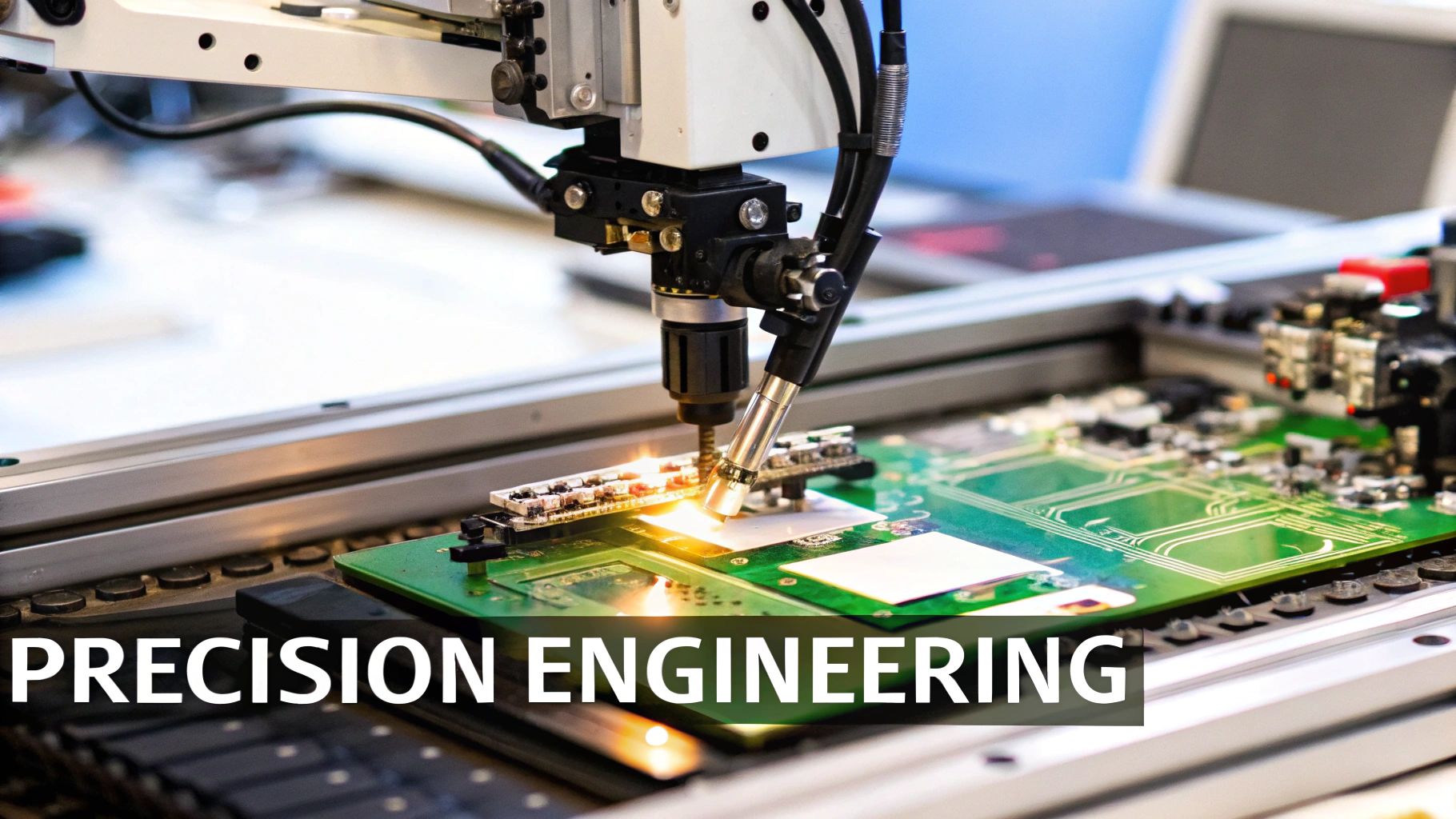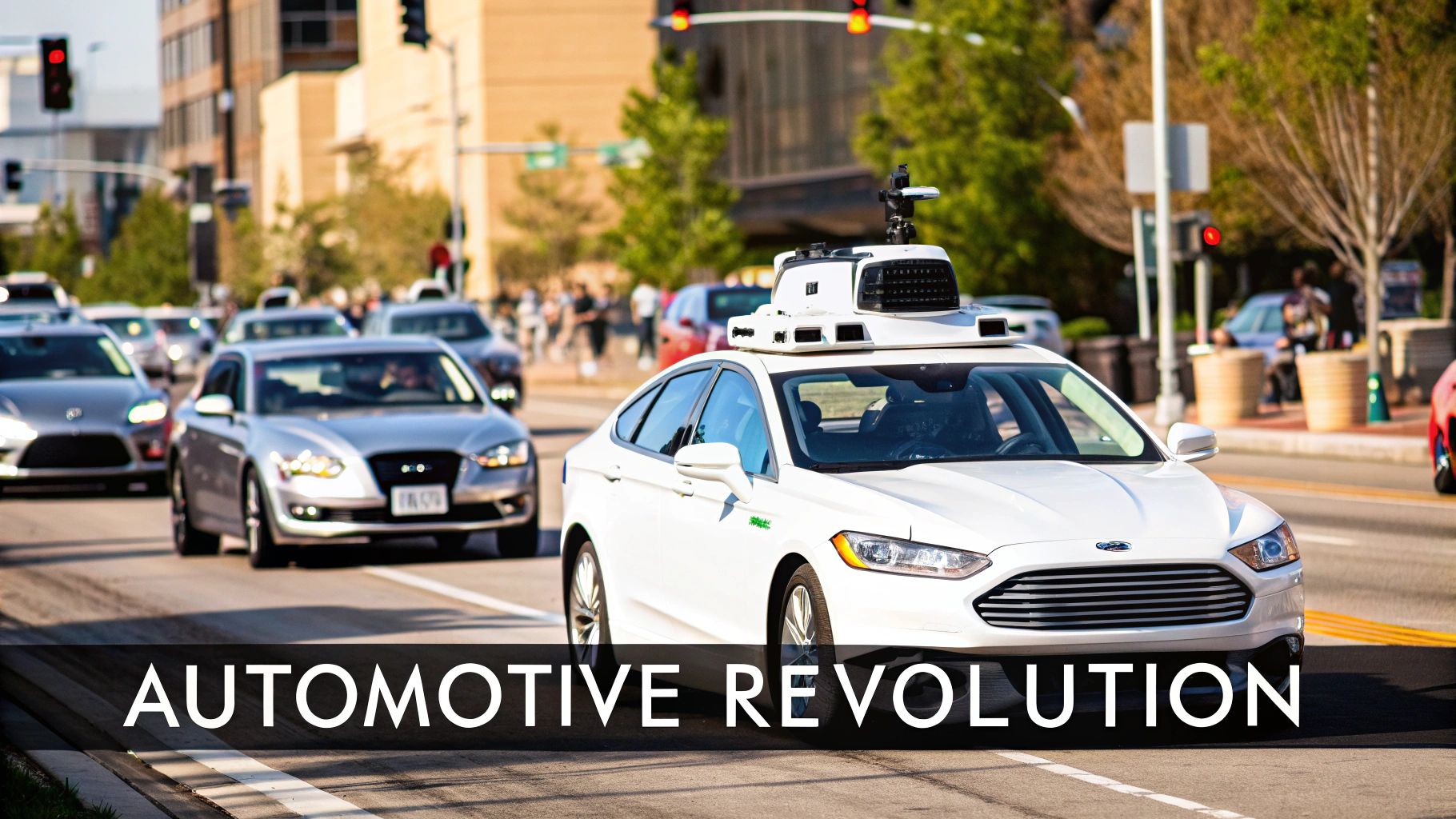High Impact Technology: Expert Guide to Digital Transformation Excellence
The Evolving Landscape of High Impact Technology

Technology is advancing at a remarkable pace, creating opportunities while also posing key challenges for businesses. A thoughtful approach is essential when selecting and implementing high impact technology solutions. Success requires understanding both the potential of new technologies and the realities of integrating them effectively.
Identifying High Impact Technologies
Organizations face the critical task of determining which technologies will deliver the most value. While many options exist, some provide clearer and more immediate benefits than others. The focus should be on technologies that directly support core business goals and deliver measurable results. Key examples include cloud computing for scalability, artificial intelligence (AI) for process automation and analytics, and cybersecurity solutions for protecting critical data and operations.
Navigating the Tech Landscape: Growth Amidst Uncertainty
The tech sector weathered significant challenges in 2022-2023, including high inflation and economic instability. However, the outlook remains strong. Global IT spending is projected to grow by 9.3% in 2025, with notable growth in data centers and software. This expansion stems from rising adoption of cloud computing, AI, and security solutions. The semiconductor industry also expects double-digit revenue increases in 2025, driven by demand for AI chips. For more details, see Deloitte Insights.
Practical Implementation: Balancing Innovation and Execution
Successful technology adoption requires more than just selecting promising solutions. Organizations must take a balanced approach that considers both innovation potential and implementation realities. This means carefully assessing existing systems, technical capabilities, and staff expertise. For example, AI implementation needs the right technology stack plus the skills to develop and manage AI systems. Similarly, moving to the cloud requires detailed planning to maintain security and smooth integration.
Measuring Success: Beyond Traditional Metrics
Tracking the impact of technology investments is vital for continuous improvement. While metrics like cost savings matter, they tell only part of the story. Companies should evaluate broader effects on customer satisfaction, employee experience, and business flexibility. Taking this comprehensive view of technology assessment helps create lasting positive change. Regular evaluation and adjustment of technology strategies ensures organizations gain maximum benefit from their investments.
Mastering the AI Revolution: From Implementation to Innovation

Smart companies achieve better results by effectively implementing advanced AI solutions alongside human expertise. This practical approach helps organizations boost efficiency and create new opportunities, moving beyond empty AI hype to deliver real business value.
Integrating AI Across Business Functions
AI is now an essential business tool that delivers concrete benefits. For example, developers use AI to speed up coding, catch bugs early, and build better software faster. AI also powers personalized product recommendations and smart customer service tools that improve satisfaction and sales.
AI makes consumer electronics smarter and more user-friendly. Modern smartphones use AI to take better photos and recognize objects, while virtual assistants help manage schedules and control smart home devices. These AI features make technology more natural and effective for everyday use.
The shift toward AI adoption continues growing rapidly. Research shows that in 2024, 82% of developers regularly use tools like ChatGPT for coding tasks, with further increases expected next year. For more data, see Statista's tech trends report. To use AI responsibly, companies need proper training and ethical guidelines. Related: Hyathi Technologies and Force Multiplier Venture Labs Forge Strategic Partnership to Accelerate AI and Blockchain Development.
Balancing Innovation Speed and Responsible AI Deployment
While quick AI adoption brings major benefits, using it responsibly is essential. Companies should create clear rules for fair and transparent AI use. This includes avoiding biases and discriminatory outcomes in AI systems. Good employee training helps teams use AI tools effectively while avoiding potential issues. By focusing on both speed and safety, organizations can get the most value from AI while building trust and ensuring long-term success.
Manufacturing Excellence Through Digital Innovation
The manufacturing sector is going through major changes as companies adopt advanced technologies. This isn't just about using new tools - it's about rethinking core processes to achieve better results. Smart factories are becoming more efficient and better able to adapt to market needs.
The Power of Interconnected Systems
Modern manufacturers are connecting different parts of their operations into unified systems. This includes combining advanced robotics, IoT sensors, and data analytics to work together smoothly. For instance, sensors on machines can feed data to AI systems that predict when maintenance will be needed. This helps prevent breakdowns and keeps production running smoothly. By connecting these pieces, companies create truly smart manufacturing.
Data-Driven Decision Making
Connected factory systems produce valuable data that improves decision making. AI-powered analytics help optimize production schedules, manage inventory levels, and catch quality issues early. Rather than just reacting to problems, manufacturers can now spot and fix issues before they cause disruptions. The data shows clear benefits from investing in these modern technologies.
Overcoming Implementation Challenges
While the advantages are clear, putting new technologies in place takes work. A common challenge is making new systems work with older equipment. Many companies find success by starting small with pilot projects before expanding. Getting workers on board and providing good training is also essential. Learn more in our guide on building a successful portfolio.
Measuring Transformation Success
Tracking results requires looking beyond basic metrics like costs and output. It's important to measure how well the company can adapt, satisfy customers, and develop new capabilities. India provides a good example - their electronics manufacturing grew from ₹3.88 lakh crore (US$60 billion) in 2017-18 to ₹8.22 lakh crore (US$101 billion) in 2022-23, with 16.19% annual growth. See the full report here. This shows how strategic tech investments drive major improvements. For more insights, check out How to master portfolio building.
Forward-Looking Technologies Setting New Standards

New high-impact technologies are emerging that will shape how businesses operate in the coming years. Major developments in quantum computing, blockchain applications, and advanced robotics present significant opportunities for companies ready to adopt them.
Quantum Computing: Breaking Computational Barriers
Quantum computing uses quantum mechanics to tackle problems beyond the reach of today's most powerful computers. Its practical applications include faster drug discovery, better materials science, and more accurate financial models. For example, quantum systems can simulate molecular behavior with exceptional precision to speed up medical research. This potential is drawing major research funding and development efforts.
Advanced Blockchain: Expanding Beyond Finance
While most know blockchain from cryptocurrencies, its uses go much further. Modern blockchain systems improve security and tracking across many sectors. Supply chains gain end-to-end visibility to prevent fraud. Organizations can verify credentials and manage digital identities more efficiently, cutting administrative work.
Next-Generation Robotics: Smarter Automation
Modern robots combine advanced AI with sophisticated hardware to handle complex tasks requiring learning and adaptation. They work safely alongside humans, navigate changing environments, and perform precise operations like surgery. This enables more automation in manufacturing, logistics, and healthcare while boosting output.
Implementing New Technologies Effectively
Adopting these technologies requires careful planning. Companies need clear frameworks to assess their readiness and verify their infrastructure can support new systems. To minimize disruption, organizations should:
- Roll out changes in phases
- Provide thorough staff training
- Build internal expertise through:
- Research and development
- Continuous learning programs
- Hiring specialized talent
These technologies represent major shifts in business operations. While implementation brings challenges, the opportunities are substantial for prepared organizations. Success requires understanding both the technical requirements and organizational changes needed to benefit from these advances.
Sustainable Technology: Driving Environmental Innovation

Companies are discovering that technology can help achieve both business growth and environmental goals. The connection between tech solutions and sustainability is becoming clearer as more organizations see how sustainable practices directly impact their success.
Green Technology Solutions Across Industries
Real-world examples show technology's role in environmental progress. Energy-efficient data centers now use advanced cooling systems and server virtualization to reduce power use. Smart resource management systems help companies track and optimize their water and materials usage, creating less waste. These tools are making a difference across many sectors - from factories to hospitals to financial institutions.
Integrating Sustainable Practices into Your Tech Stack
To make your technology more sustainable, focus on these key areas:
- Review your current impact: Look at how much energy your tech systems use and what waste they create
- Choose green tech options: Pick hardware and software designed to use less energy and resources
- Use smart monitoring: Set up systems to track and improve how you use resources
These steps help create an effective environmental technology plan.
Balancing Sustainability with Business Objectives
Many worry that being environmentally responsible hurts profits. But the opposite is often true - sustainable practices can boost business results. Lower energy use means lower costs. Being eco-friendly can also improve your brand's reputation and attract customers who care about the environment. You might be interested in: Hyathi Technologies Recognized as a Top Cybersecurity Company.
Building Stakeholder Support for Green Initiatives
Getting everyone on board with sustainable technology requires:
- Teaching employees about green tech benefits and their role in making it work
- Sharing progress openly with customers, investors and the public
- Working with partners to create environmentally responsible supply chains
When everyone understands and supports environmental efforts, organizations can build lasting sustainable practices. This approach helps both the environment and business growth by creating value in multiple ways.
Strategic Implementation Guide: From Vision to Reality
Successfully implementing advanced technology requires a clear roadmap that connects new tools with core business goals. This section explores proven approaches organizations use to plan, execute and measure technology initiatives.
Evaluating Technology Solutions
Begin with a thorough assessment of your current capabilities and infrastructure. Map out where your organization stands today, identify key gaps, and set specific goals you want to achieve. For example, if customer service needs improvement, you might explore AI chatbots or recommendation systems that directly address those pain points.
Adoption and Scaling: A Phased Approach
Take a gradual, controlled approach to implementing new systems. Start with focused pilot projects to test solutions in a limited environment. This lets you gather real data, spot potential issues, and fine-tune before wider deployment. For instance, when rolling out a new CRM system, begin with one team to identify training needs and troubleshoot technical challenges.
Change Management and Team Training
New technology often requires updates to processes and skills. Effective change management starts with clear communication about the benefits and impact of new tools. Provide comprehensive training and support to help teams build confidence and capability. When staff understand the "why" behind changes, adoption goes more smoothly.
Measuring ROI and Demonstrating Success
Track the business impact of your technology investments carefully. Define clear performance metrics tied to your initial objectives - whether that's efficiency gains, cost reduction, improved customer satisfaction, or enhanced security. Regular monitoring helps prove value and guides future investment choices.
Risk Management and Continuous Progress
Technology implementation comes with inherent challenges. Build a solid risk management plan covering key areas like cybersecurity, data backup, and system redundancy. Stay focused on continuous improvement by regularly evaluating your technology stack and adjusting strategies based on results and emerging needs.
Ready to transform your organization with impactful technology solutions? Visit Hyathi Technologies to explore how we can help you achieve your business technology goals.